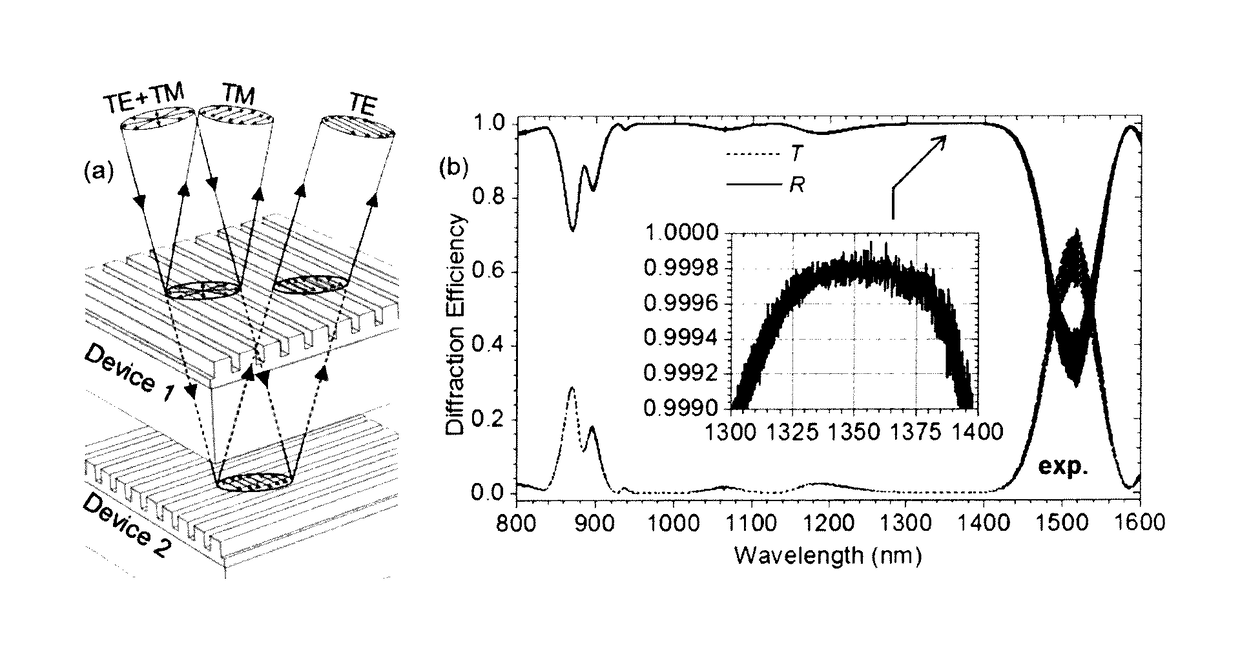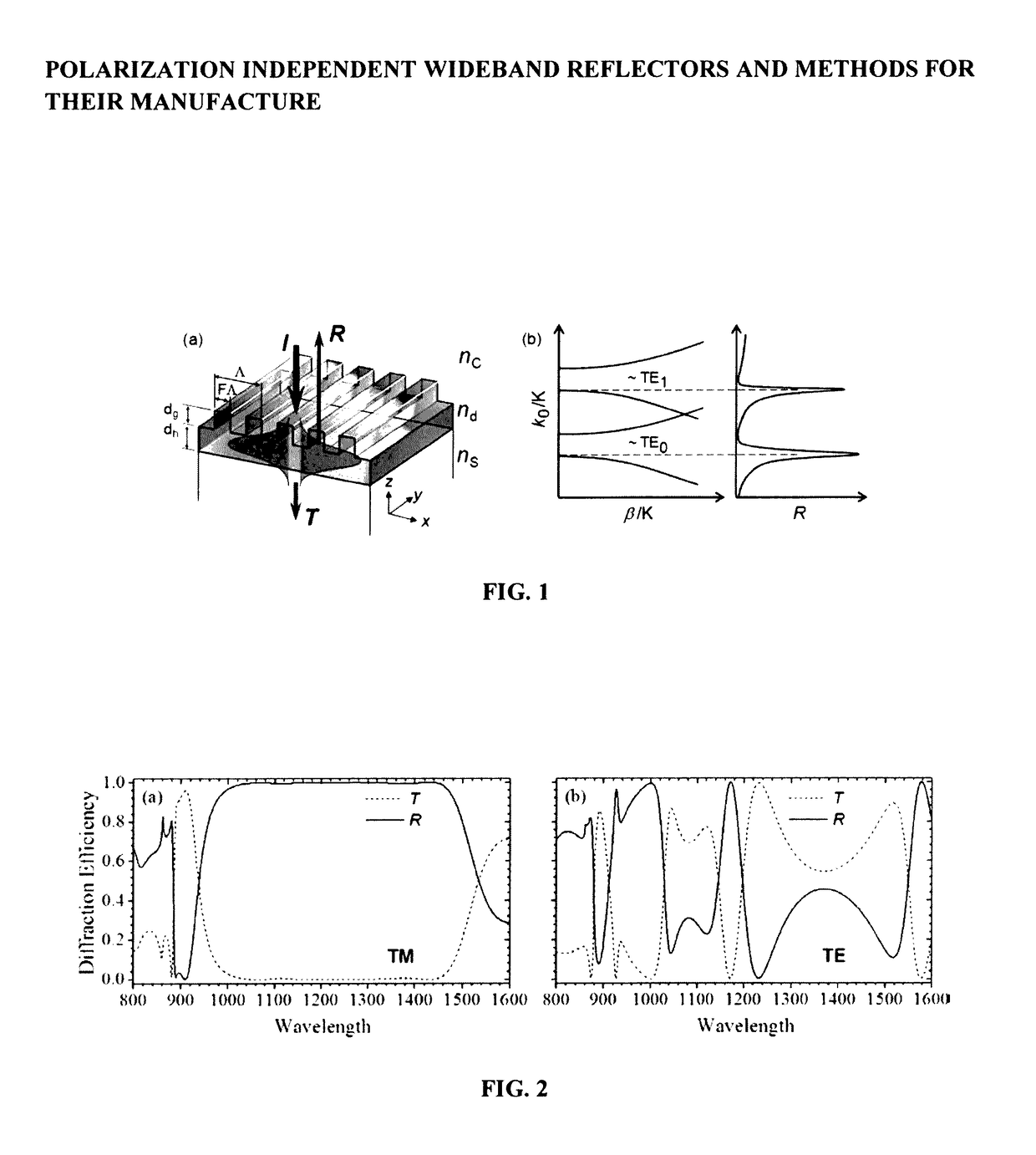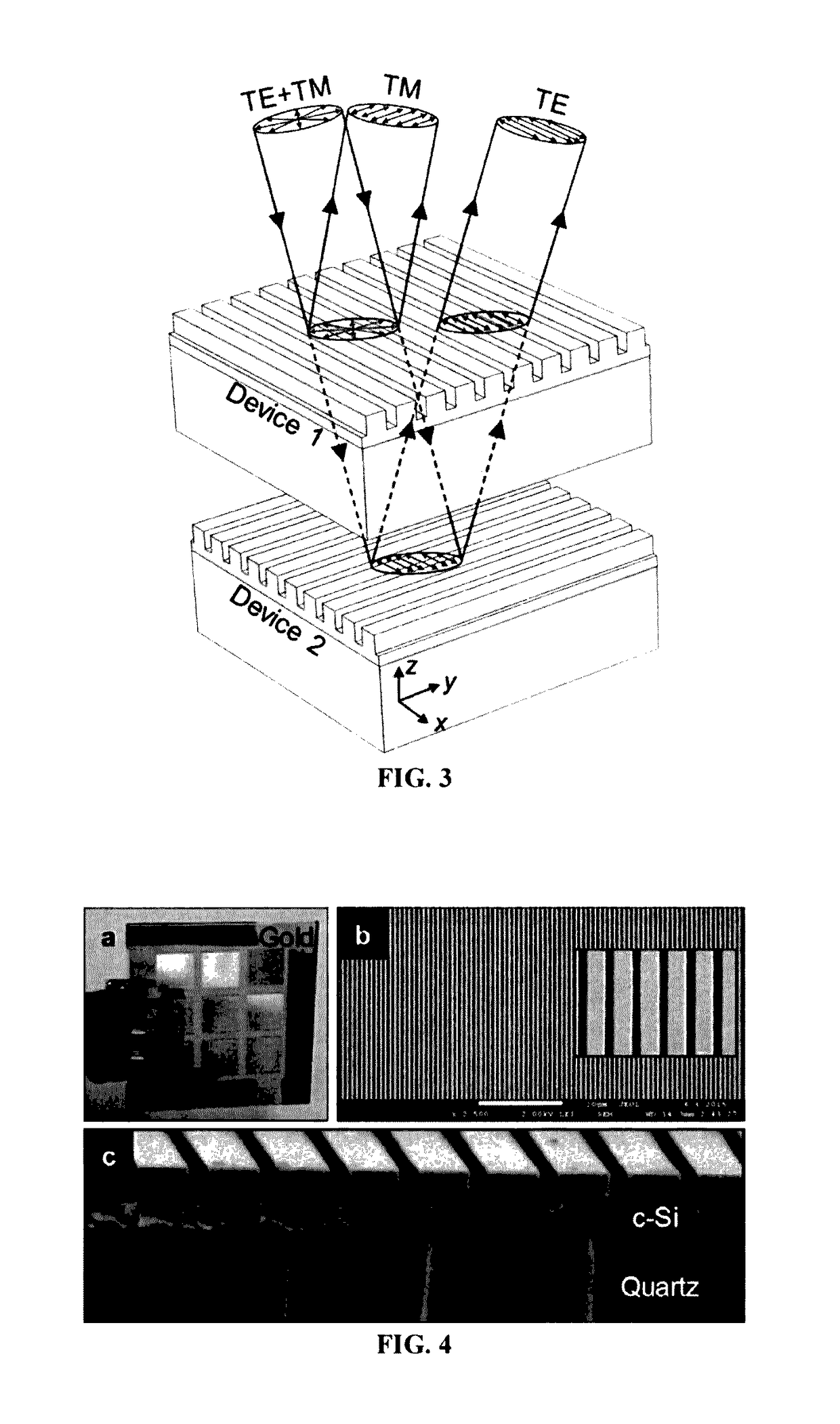Polarization Independent Wideband Reflectors and Methods for Their Manufacture
a wideband reflector and polarization independent technology, applied in the direction of optics, instruments, diffraction gratings, etc., can solve the problems of limited wideband reflection in this one-dimensional (1d) grating architecture, impractical multi-layer deposition, etc., and achieve wide spectral reflection bands, simple design, and robust performance.
- Summary
- Abstract
- Description
- Claims
- Application Information
AI Technical Summary
Benefits of technology
Problems solved by technology
Method used
Image
Examples
example 1
Sequentially Arranged Wideband Reflector Concept
[0038]FIG. 3 illustrates a sequentially arranged wideband reflector schematic. Device 1 and Device 2 are polarization-sensitive wideband reflectors made with zero-contrast gratings (ZCGs) working in TM polarization. When the devices are sequentially arranged such that their grating planes are parallel (x-y plane) and their grating vectors K are orthogonal to one another, wherein K is along the y-axis for Device 1 and the x-axis for Device 2, the overall sequential-arrangement becomes polarization insensitive. For unpolarized input light with TE+TM components, Device 1 near-completely reflects the TM components and partially transmits the TE components. This transmitted TE component is TM polarized with respect to Device 2 and is also completely reflected. This results in near-complete reflection of both TE and TM components resulting in polarization-insensitive wideband reflection. Note that because Device 1 and Device 2 also partially...
example 3
Experimental Reflector Fabricated in Amorphous Silicon-On-Glass
[0040]In a second experimental example, we implement the sequential ZCG arrangement shown in FIG. 3 with a pair of wideband reflectors fabricated in a silicon-on-glass platform as opposed to the previous SOQ example. The two polarization-sensitive reflectors share similar experimental grating parameters that are Λ=856 nm, F=0.54, dg=563 nm, and dh=408 nm. FIG. 8(a) shows an AFM of a representative fabricated device and FIG. 8(b) shows an SEM of a 2×2 array of devices that each measure 5×5 mm2. The reflectors are made with a-Si sputtered onto a substrate of soda-lime glass. FIG. 9(a) reveals the spectral properties of a single prototype a-Si ZCG reflector depicting both numerical and experimental data. There results a wide high-efficiency band for TM polarization extending from λ˜1.7 μm to λ˜2.3 μm. FIG. 9(b) schematically shows the response of the serial reflectors to the two polarization components present in the input ...
example 4
Sequentially Arranged a Wideband Reflector Pairs
[0042]The concept of sequential assembly of ZCGs to realize unpolarized wideband reflectors can by extended to n reflector pairs, as shown in FIG. 11, to increase the width and efficiency of a reflection band. In FIG. 11(a), a schematic representation of n pairs of polarization-independent wideband reflectors with different operating wavelengths λ1, λ2, λ3, . . . , λn, and reflection bandwidths Δλ1, Δλ2, Δλ3, . . . , Δλn, respectively is shown. Each pair represents a polarization-independent wideband reflector, with one center wavelength (λ) and reflection bandwidth (Δλ), sequentially arranged. Under broadband light incidence, the first pair reflects unpolarized bandwidth Δλ1 centered at λ1. The second pair reflects bandwidth Δλ2 centered at λ2 and so on. Consequently, all design wavelengths at both light polarizations are reflected with high efficiency by the sequential arrangement in FIG. 11(a). The spectral response looks like that ...
PUM
 Login to View More
Login to View More Abstract
Description
Claims
Application Information
 Login to View More
Login to View More - R&D
- Intellectual Property
- Life Sciences
- Materials
- Tech Scout
- Unparalleled Data Quality
- Higher Quality Content
- 60% Fewer Hallucinations
Browse by: Latest US Patents, China's latest patents, Technical Efficacy Thesaurus, Application Domain, Technology Topic, Popular Technical Reports.
© 2025 PatSnap. All rights reserved.Legal|Privacy policy|Modern Slavery Act Transparency Statement|Sitemap|About US| Contact US: help@patsnap.com



